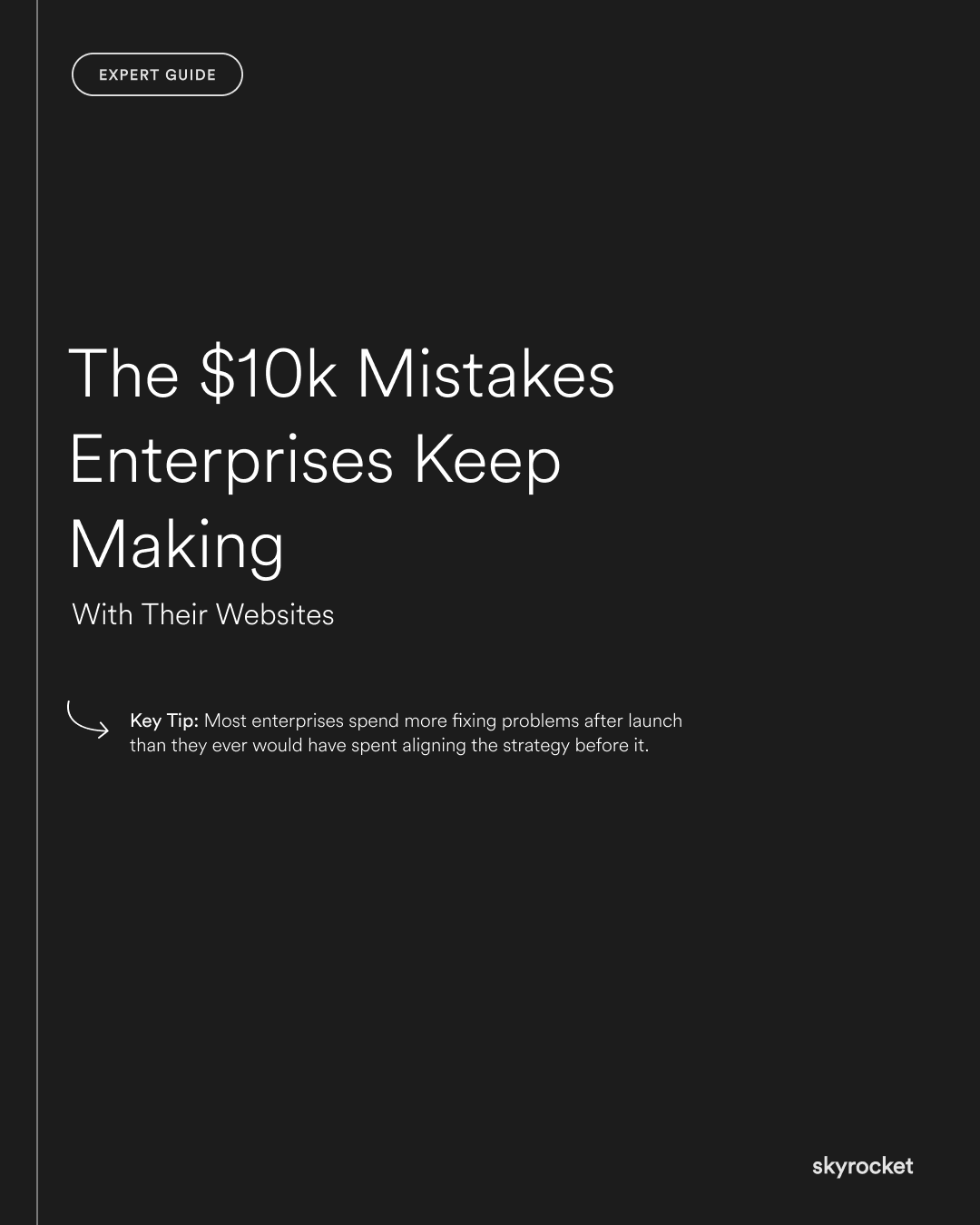Across New Zealand, large and established businesses spend tens of thousands building or rebuilding their websites each year. Yet most of that money never delivers the return it should.
The reason isn’t poor design or lazy development. It’s misalignment between business goals, user needs, and digital execution. When your website looks the part but fails to perform, you’re not just wasting budget. You’re missing growth.
In enterprise environments, those missteps quickly turn into five-figure costs. Time lost to rework. Brand damage from confusion. Missed leads that never convert.
This guide breaks down the five $10k mistakes we see most often and how to avoid them.
Why this matters for enterprise leaders
For large organisations, a website isn’t marketing fluff. It’s a sales engine, recruitment tool, investor touchpoint, and trust signal rolled into one.
When it’s underperforming, the effects show up everywhere else:
- Marketing ROI flatlines.
- Sales teams over-compensate.
- Brand credibility slips.
- Cost per acquisition rises.
Treating the website as a static project rather than a growth system is one of the most expensive strategic errors an enterprise can make.
Key Tip: Most enterprises spend more fixing problems after launch than they ever would have spent aligning the strategy before it. A smart website project builds around measurable business outcomes, not design trends.
Mistake #1: Treating your website like a design project
The issue
Many corporate web projects start with a creative brief, not a commercial one. Internal teams focus on aesthetics and stakeholder approval rather than measurable outcomes.
The result is a good-looking site that doesn’t move numbers.
Why it costs $10k+
Revisions, extra development hours, and post-launch changes pile up when no one defined success up front. You end up paying twice: once to build it, and again to make it perform.
The fix
Start with business goals.
Ask:
- What specific outcomes should the website deliver in the next year?
- Which metrics will prove success?
- How will we track ROI?
Only once these are clear should design and copy decisions follow.
Example:
A Wellington consultancy spent $50k on a sleek new site that didn’t increase enquiries. When they rebuilt around buyer intent and lead capture, conversions doubled within three months.
Mistake #2: Writing for yourselves, not your customers
The issue
Enterprise websites often speak in internal language: “solutions,” “synergies,” “transformational outcomes.” It sounds polished internally but says little to the customer.
Why it costs $10k+
When visitors don’t instantly understand what you do and why it matters, they leave. That lost traffic and lower conversion rate can wipe thousands from annual pipeline value.
The fix
Write for clarity, not approval.
- Use the language your customers use.
- Lead with outcomes: save time, reduce risk, grow revenue.
- Cut the corporate filler.
Example:
A national logistics firm replaced jargon-heavy copy with plain language focused on reliability and delivery speed. Their form submissions jumped 40% in eight weeks.
Key takeaway
If your copy could appear on any competitor’s site, it’s not specific enough.
Mistake #3: Rebuilding instead of refining
The issue
Enterprises often commission full redesigns every few years. Each rebuild costs $30k–$100k and resets years of user data.
Why it costs $10k+
You lose SEO performance, analytics history, and user familiarity, all hard-won assets. The “clean slate” approach feels exciting but erases insight.
The fix
Adopt continuous improvement.
Instead of rebuilding, plan quarterly or biannual optimisation cycles:
- Review analytics and identify drop-off points.
- A/B test page layouts or messaging.
- Refresh content based on current demand.
- Improve site speed or accessibility.
Smaller, data-driven changes compound into lasting growth.
Example:
A large retailer improved online revenue 35% in a year by refining product pages and checkout flow. No redesign. Just iteration.
Key takeaway
Incremental improvement is cheaper, faster, and more effective than full rebuilds.
Mistake #4: Letting too many voices drive decisions
The issue
In enterprise teams, everyone has input: marketing, sales, IT, legal, leadership. Without clear ownership, progress slows and decisions become political.
Why it costs $10k+
Delays add months of agency time and scope creep. Multiple revisions, duplicate feedback rounds, and unclear direction burn budget quickly.
The fix
Create governance early.
- Appoint a single project owner with decision authority.
- Involve stakeholders at milestones, not every step.
- Use a simple hierarchy: business goals first, user goals second, personal opinions third.
Example:
A national distributor shaved six weeks off their Webflow build by giving final say to one marketing lead. The site launched on time, under budget, and with less compromise.
Key takeaway
Consensus kills momentum. Clear ownership drives results.
Mistake #5: Forgetting the post-launch phase
The issue
Enterprises often treat “go live” as the end. Budgets close, teams move on, and optimisation never happens.
Why it costs $10k+
A stagnant site loses search visibility and conversion efficiency over time. You pay for performance that gradually fades.
The fix
Plan the post-launch roadmap before launch.
- Schedule quarterly reviews to analyse data and test improvements.
- Refresh SEO and content regularly.
- Track conversion funnels and update messaging as your business evolves.
Treat the site like a product that grows with your company, not a project that ends.
Example:
A B2B SaaS company added a continuous improvement budget after launch. Within a year, their website’s lead-to-sale ratio increased 50% without a single redesign.
Common objections and why they cost you later
“We just need a few tweaks.”
Small aesthetic tweaks rarely fix strategic problems. If your structure or messaging is off, design changes won’t move the needle.
“Our current site works fine.”
“Fine” is another word for plateau. Check whether it still aligns with your latest products, audiences, and sales processes.
“We’ll optimise later.”
Later rarely happens. Without a plan, analytics lose context and improvements get deprioritised. Bake optimisation into the project from day one.
The bigger mindset shift
High-performing NZ enterprises treat their website as a living business system.
It supports sales, informs strategy, and earns back its investment through data-driven improvement.
When you build for outcomes, not opinions, your website stops being a cost centre and starts driving measurable ROI.
What to do now
If you suspect your website is quietly leaking money, start here:
- Audit performance. Review analytics, conversions, and messaging alignment.
- Define success. Set clear business goals for the next 12 months.
- Assign ownership. Nominate one accountable website lead.
- Adopt iteration. Schedule quarterly improvement cycles.
- Budget for growth. Keep funds aside for optimisation, not just launch.
Final thought
Every enterprise website represents a major investment, but only some deliver lasting return.
The difference isn’t the design, platform, or price. It’s the mindset.
When you treat your website as a living, measurable growth asset, you avoid the $10k mistakes and build something that keeps earning its keep.
If you’d like an expert partner to help your website perform like a true business asset, Skyrocket works with NZ enterprises to build and evolve high-impact Webflow and Shopify sites that drive measurable growth.



